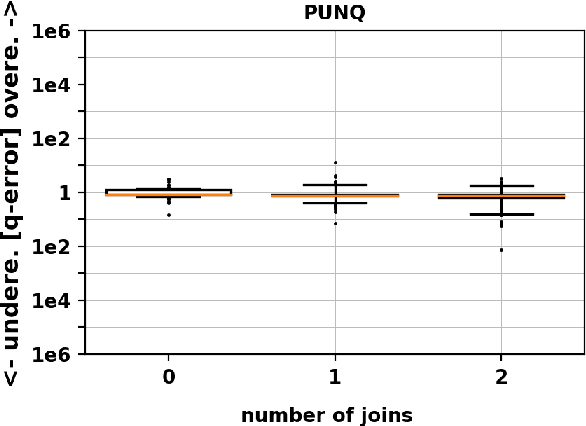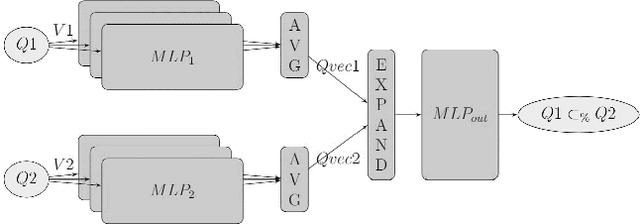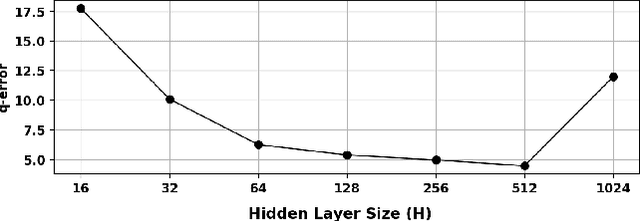Rojeh Hayek
NN-based Transformation of Any SQL Cardinality Estimator for Handling DISTINCT, AND, OR and NOT
Apr 15, 2020



Abstract:SQL queries, with the AND, OR, and NOT operators, constitute a broad class of highly used queries. Thus, their cardinality estimation is important for query optimization. In addition, a query planner requires the set-theoretic cardinality (i.e., without duplicates) for queries with DISTINCT as well as in planning; for example, when considering sorting options. Yet, despite the importance of estimating query cardinalities in the presence of DISTINCT, AND, OR, and NOT, many cardinality estimation methods are limited to estimating cardinalities of only conjunctive queries with duplicates counted. The focus of this work is on two methods for handling this deficiency that can be applied to any limited cardinality estimation model. First, we describe a specialized deep learning scheme, PUNQ, which is tailored to representing conjunctive SQL queries and predicting the percentage of unique rows in the query's result with duplicate rows. Using the predicted percentages obtained via PUNQ, we are able to transform any cardinality estimation method that only estimates for conjunctive queries, and which estimates cardinalities with duplicates (e.g., MSCN), to a method that estimates queries cardinalities without duplicates. This enables estimating cardinalities of queries with the DISTINCT keyword. In addition, we describe a recursive algorithm, GenCrd, for extending any cardinality estimation method M that only handles conjunctive queries to one that estimates cardinalities for more general queries (that include AND, OR, and NOT), without changing the method M itself. Our evaluation is carried out on a challenging, real-world database with general queries that include either the DISTINCT keyword or the AND, OR, and NOT operators. Experimentally, we show that the proposed methods obtain accurate cardinality estimates with the same level of accuracy as that of the original transformed methods.
Improved Cardinality Estimation by Learning Queries Containment Rates
Aug 21, 2019



Abstract:The containment rate of query Q1 in query Q2 over database D is the percentage of Q1's result tuples over D that are also in Q2's result over D. We directly estimate containment rates between pairs of queries over a specific database. For this, we use a specialized deep learning scheme, CRN, which is tailored to representing pairs of SQL queries. Result-cardinality estimation is a core component of query optimization. We describe a novel approach for estimating queries result-cardinalities using estimated containment rates among queries. This containment rate estimation may rely on CRN or embed, unchanged, known cardinality estimation methods. Experimentally, our novel approach for estimating cardinalities, using containment rates between queries, on a challenging real-world database, realizes significant improvements to state of the art cardinality estimation methods.
 Add to Chrome
Add to Chrome Add to Firefox
Add to Firefox Add to Edge
Add to Edge